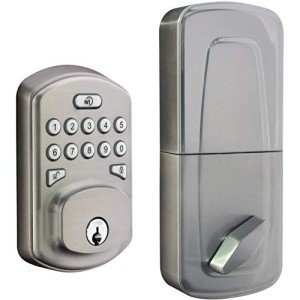Responsible For An Decorative Lighting UK Budget? Twelve Top Tips To Spend Your Money
Decorative Lighting in the UK: A Comprehensive Guide
Recently, decorative lighting has taken centre phase in interior decoration across the UK. House owners and designers alike are significantly identifying the value of lighting not just for functionality, however likewise for looks. This post explores the various kinds of decorative lighting readily available, the current trends in the UK market, and useful suggestions for selecting and setting up the right lighting to improve numerous areas in homes.
Understanding Decorative Lighting
Decorative lighting includes a broad range of lighting fixtures that serve to boost the beauty of a space while also supplying lighting. This kind of lighting adds a touch of design, character, and warmth to environments, developing state of minds and highlighting architectural features. The crucial difference between decorative lighting and other forms of lighting, such as task or ambient lighting, is that decorative lighting primarily aims to develop visual appeal.
Types of Decorative Lighting
There are different kinds of decorative lighting that house owners can pick from, consisting of:
Chandeliers: Often the centerpiece of dining locations or grand entrances, chandeliers are elaborate lights with multiple bulbs and artistic designs.
Pendant Lights: Suspended from the ceiling, pendant lights are offered in various styles, making them suitable for cooking areas, dining areas, or living spaces.
Wall Sconces: Mounted on walls, these fixtures can provide ambient lighting or spotlight specific areas, such as art work or architectural information.
Table Lamps: Used on night table, desks, or side tables, they can range from minimalist styles to elaborate creative pieces.
Floor Lamps: These versatile fixtures can fill empty corners while supplying both ambient and job lighting.
Fairy Lights: String lights or fairy lights include a whimsical touch to both indoor and outdoor areas, best for creating a welcoming environment.
Neon Signs: An emerging pattern, neon indications add a modern, urban flair and are popular for home bars, games spaces, and personal areas.
Current Trends in Decorative Lighting
The UK lighting market has actually seen numerous developing patterns that reflect consumer choices and advancements in innovation. A few of the popular patterns include:
Sustainable Lighting: Eco-friendly options, such as LED lighting, are increasingly favoured for their energy performance and lower carbon footprint.
Smart Lighting: Integration of smart technologies enables property owners to manage their lighting through smartphones or voice assistants, using benefit and flexibility.
Vintage and Industrial Designs: The rustic charm of vintage and industrial designs remains in vogue, as they can easily mix with both modern and traditional interiors.
Geometric Shapes: Light fixtures featuring bold geometric shapes contribute to a contemporary visual that attract modern house owners.
Choosing the Right Decorative Lighting
When picking decorative lighting, it is very important to think about the list below factors:
Purpose: Determine the primary purpose of the lighting. Is it to produce a welcoming atmosphere, highlight artwork, or offer functional lighting for activities?
Design: Carry out research study to guarantee that the chosen lighting matches the existing decor and shows personal style choices.
Size: Consider the scale of the space. Extra-large fixtures can overwhelm little spaces, while petite options might appear lost in bigger areas.
Placement: Think critically about where the fixtures will be installed, ensuring they are available and efficiently illuminate the intended locations.
Energy Efficiency: Opt for energy-efficient LEDs whenever possible to minimize energy expenses and contribute to sustainability.
Setting Up Decorative Lighting
As soon as decorative lighting alternatives have been selected, correct installation is crucial to achieving the preferred result. Here are some guidelines to follow:
Mounting Height: Ensure that chandeliers and pendant lights hang at a proper height. They need to supply ample light without blocking views or motion.
Layered Lighting: Incorporate different layers, including job, ambient, and decorative lighting, to develop balance and depth within an area.
Dimmers: Installing dimmer switches can provide versatility in changing light intensity based on activities and mood.
Professional Assistance: For complicated setups, it may be useful to hire an expert electrical contractor to make sure safety and compliance with regional policies.
Decorative lighting uses a wonderful opportunity for homeowners in the UK to reveal their design while enhancing the functionality of their areas. With a variety of alternatives available, cautious factor to consider of factors such as style, size, and positioning can cause stunning outcomes. As trends continue to evolve, people can remain on the cutting edge of decorative lighting design.
Often Asked Questions (FAQs)
Q: What is the difference in between decorative lighting and ambient lighting?A: Decorative lighting is primarily focused on aesthetic appeal, while ambient lighting supplies general lighting for an area. Q: How can I choose the ideal size chandelier for my dining room?A: A typical guideline is to add the dimensions of the room(
in feet)and use that number as the size of the chandelier(in inches ). Q: Are LED lights appropriate for decorative lighting?A: Yes, LED lights are widely utilized
due to their energy efficiency, long lifespan, and capability to come in various styles. Q: Is it essential to speak with an expert for installation?A: While some installations can be done DIY, it's recommended to
speak with an expert for complex setups to make sure safety and
compliance. Q: What materials are popular for decorative lighting fixtures in the UK?A: Common materials include glass, metal, fabric, and wood, each adding to different designs and aesthetic appeals. By comprehending lightingandlamps of decorative lighting offered, remaining notified about the current trends, and following vital guidelines for selection and installation, anybody can transform their living spaces into stunning sanctuaries of light. 